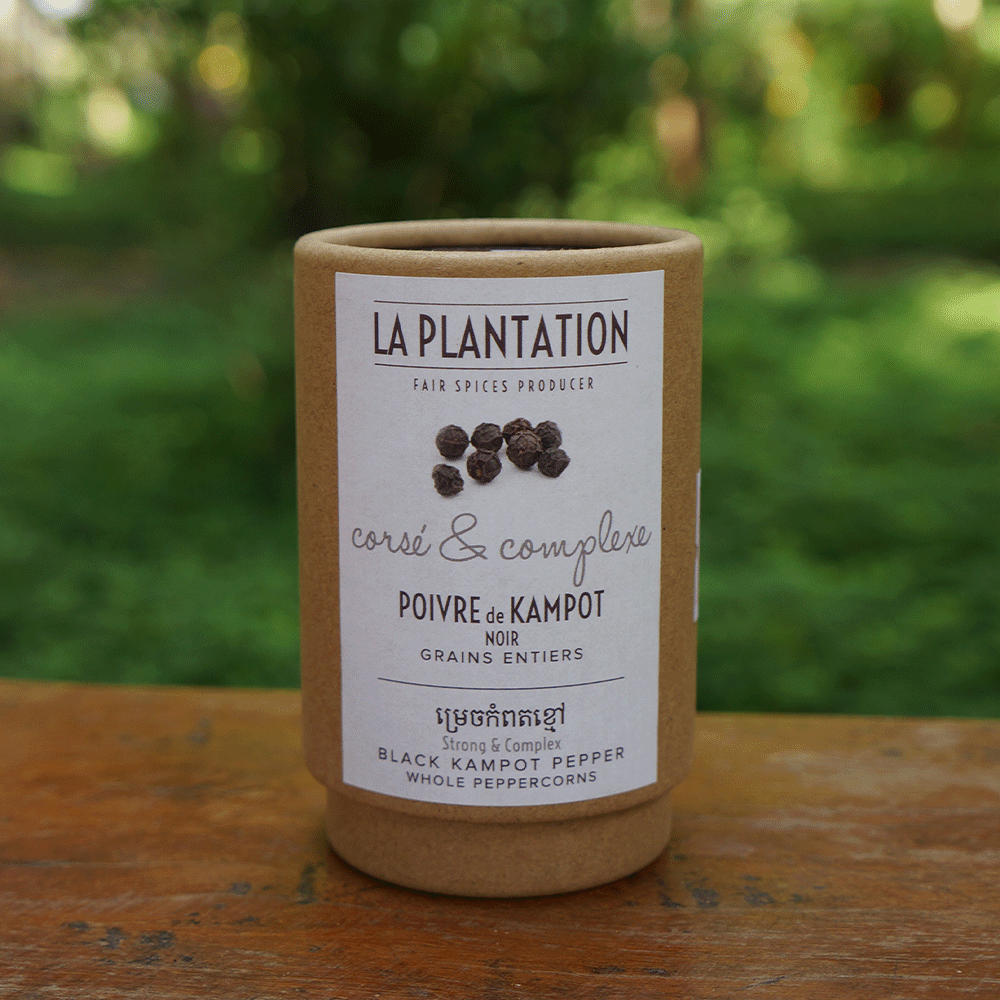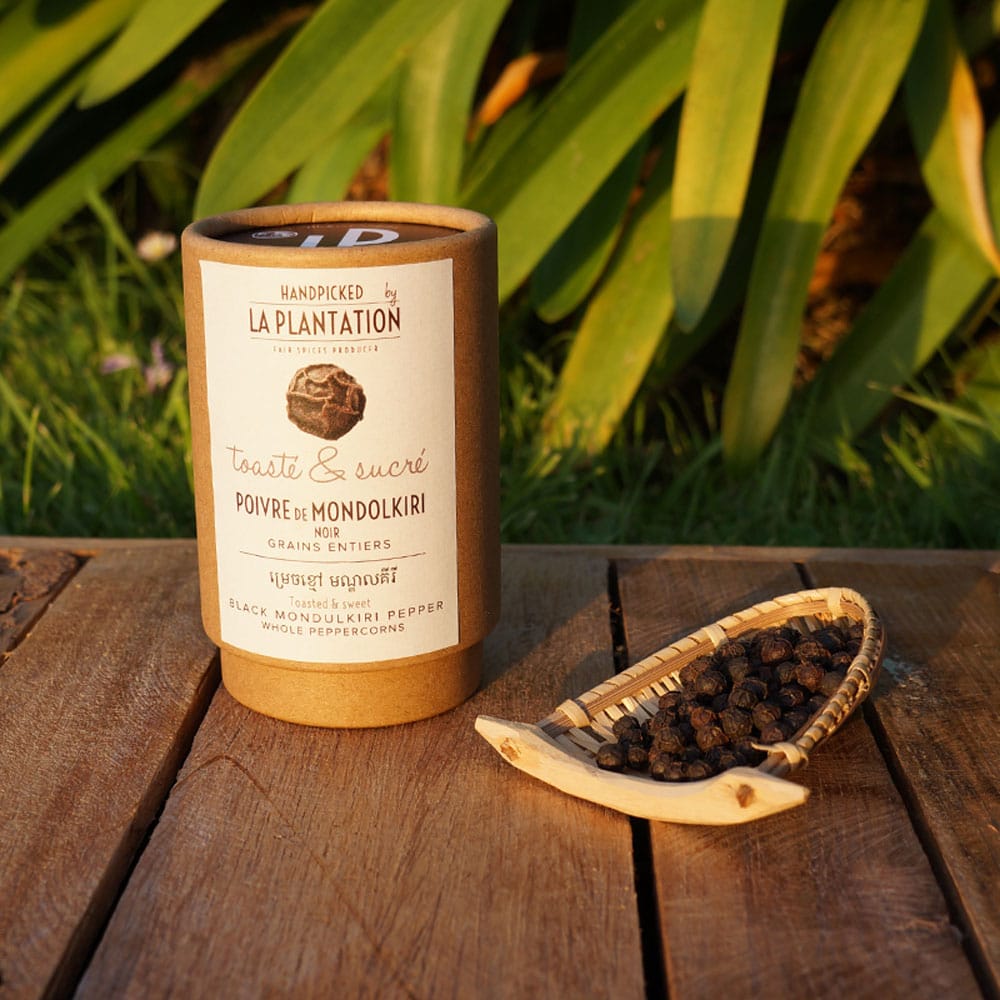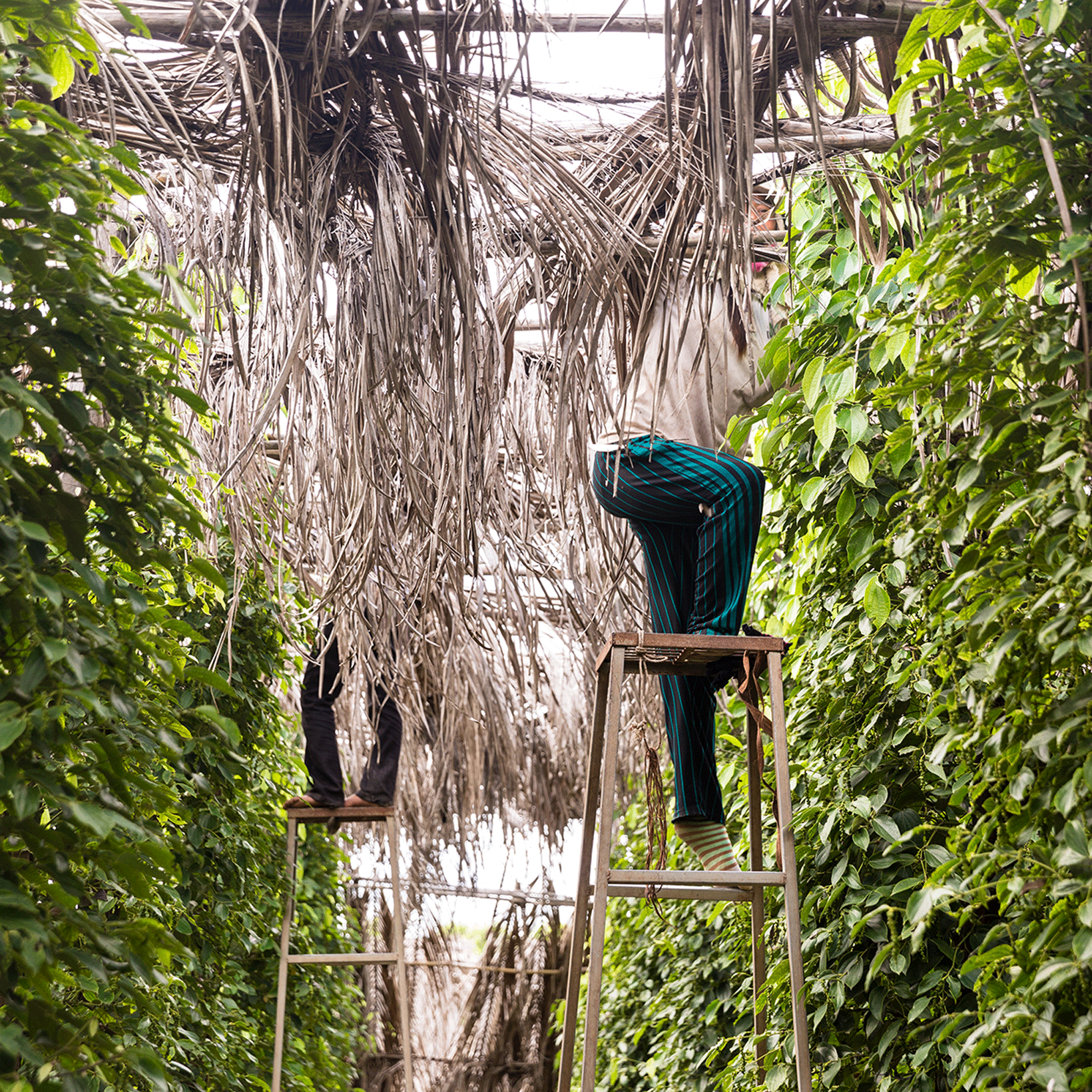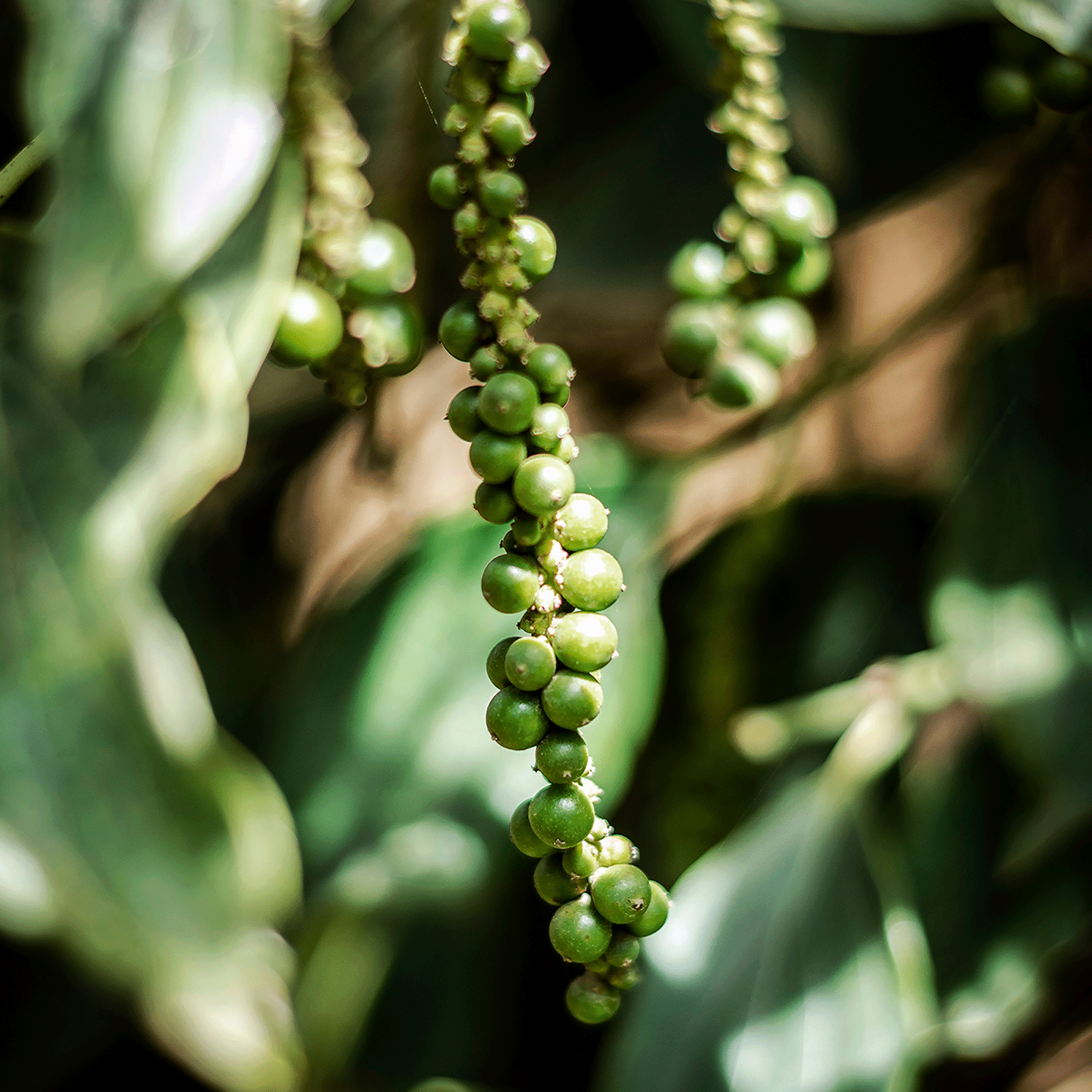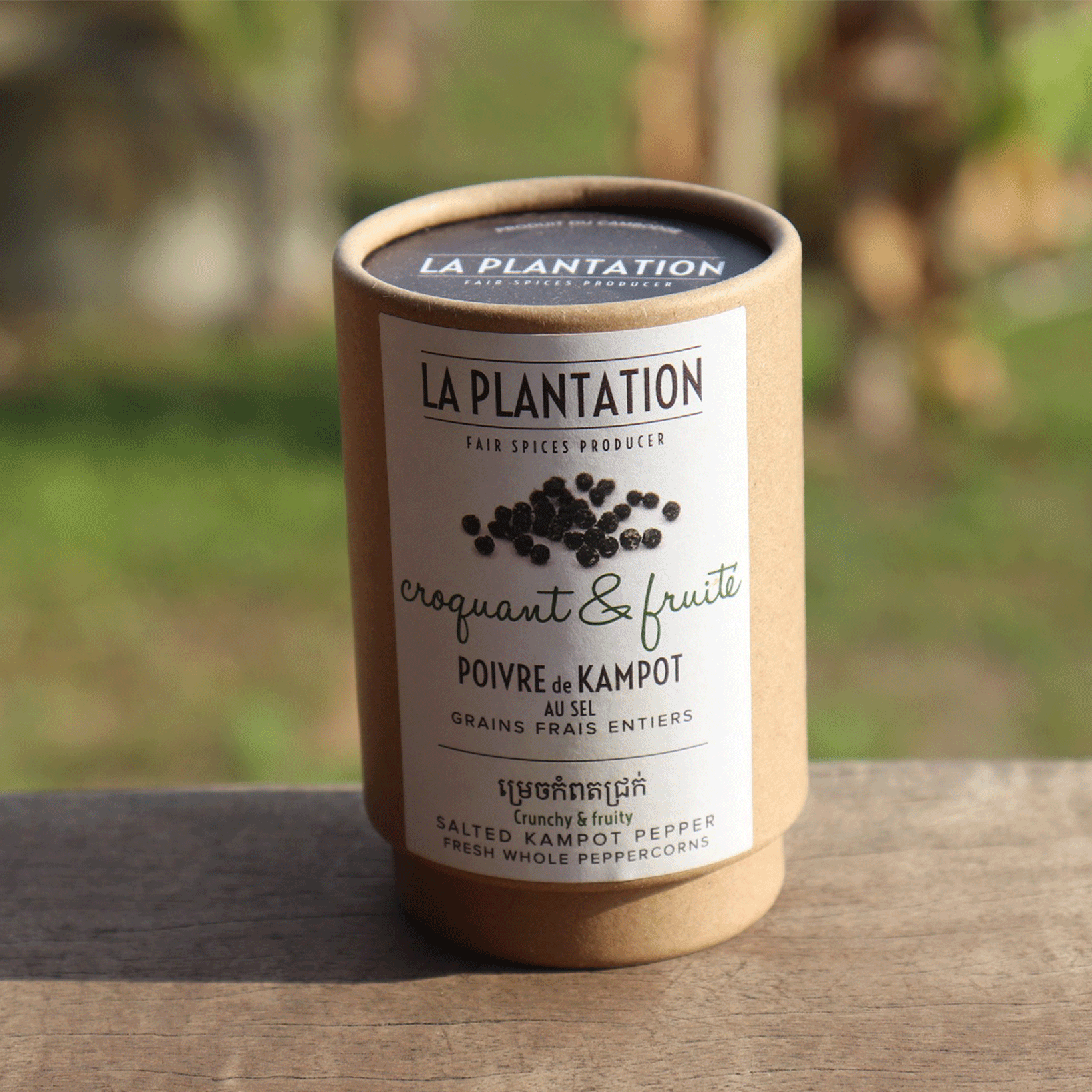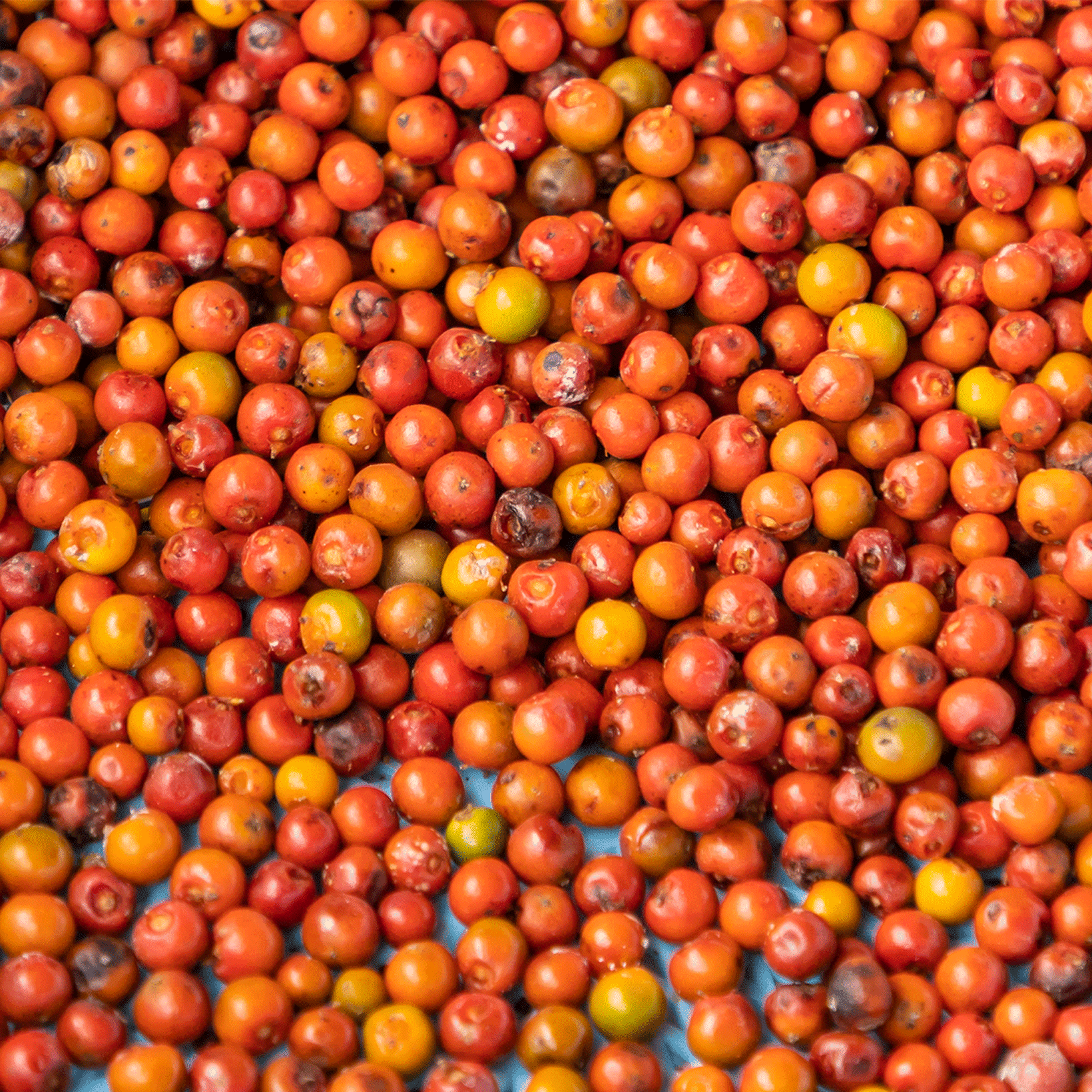
How do we produce Kampot Pepper?
Today we’d like to introduce you to our post-harvest production methods! Discover how the same plant can produce several types of pepper: Red, Black and White Kampot Pepper, as well as some of La Plantation’s exclusive innovations: Green, Salt, Vintage and Smoked Kampot Pepper.
La Plantation’s exclusive products
Fresh green pepper enjoyed on the spot – with Kep blue crab, for example – is so delicious that we wanted to be able to offer it to the whole world. In our first year of harvesting, in January 2017, we developed a process for preserving fresh Kampot Pepper with salt. This Fresh Kampot Pepper with Salt has become a must for chefs and gourmets alike. The crunchiness of its grains, surprising at first, reveals an explosion of fresh, peppery aromas. It’s highly addictive and can be enjoyed from aperitif to dessert.
With these young beans, we also offer a dehydrated Green Kampot Pepper that can be rehydrated, ground in a mill or used whole. With its beautiful green colour, this Kampot Pepper develops fresh, vegetal notes that are much appreciated.

Kampot Peppers: Black, Red and White colors
These first two peppercorns are produced in December and January from our hand-picked and de-stemmed Kampot peppercorns.
When the bunches are ripe, we produce Black, Red and White Kampot Pepper. Black Pepper is produced from the dark green berries, after scalding and sun-drying for two to three days. Red and White Kampot Pepper are produced from the red seeds that have ripened on the plant. For Red Pepper, the seeds are scalded and dried in the sun; for White Pepper, the seeds are soaked overnight in water, then the pericarp is removed and the seeds are washed in plenty of water to reveal a magnificent light beige core.
The main difference between the White Kampot Pepper and the White is that, according to the PGI specifications, it is produced exclusively from extra-ripe beans. The very short soaking time allows White Kampot Pepper to develop fresh, peppery, aniseed-flavoured aromas that are not found in White Pepper from other origins, which, because of the soaking process, develop animal notes.
Each colour of Kampot Pepper reveals completely different aromas. It is advisable not to mix them, as you would with grand cru wines. Depending on your tastes and desires, you can choose the colour to match your dish. Traditionally, we recommend Black Kampot Pepper for meats, White Kampot Pepper for fish and Red Kampot Pepper for desserts. But if you like the aroma and flavour of one of these, don’t hesitate to grind it fresh on all your dishes!
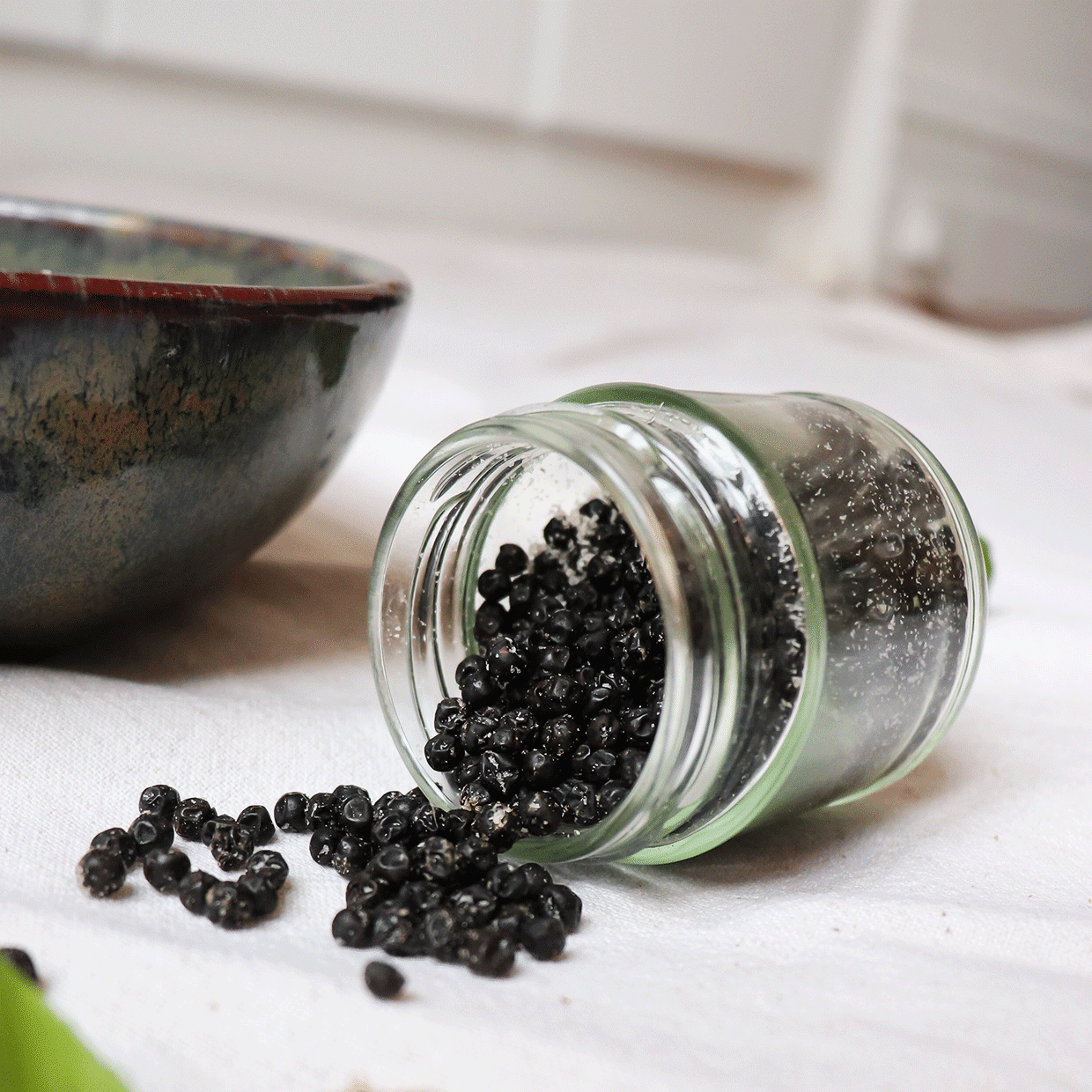
Kampot Pepper in all its originality
As part of our drive for innovation, we’ve also invented new versions of Kampot Pepper: Smoked Pepper. We have developed a cold smoking chamber and use local ingredients such as rice husks and coconut fibres for the slow combustion. Smoked Black and White Kampot Pepper develop original aromas. They retain all the aromatic richness of Kampot Pepper, enhanced by its smoky notes. They are a delicious accompaniment to smoked meats, eggs or oily fish.
And to mark each harvest, we also produce a Millésime Kampot Pepper for which we take the whole bunch, made up of red and black berries, and scald and dry the berries without separating them. This gives us a milder pepper than Black Kampot Pepper, which appeals to a large number of gourmets.
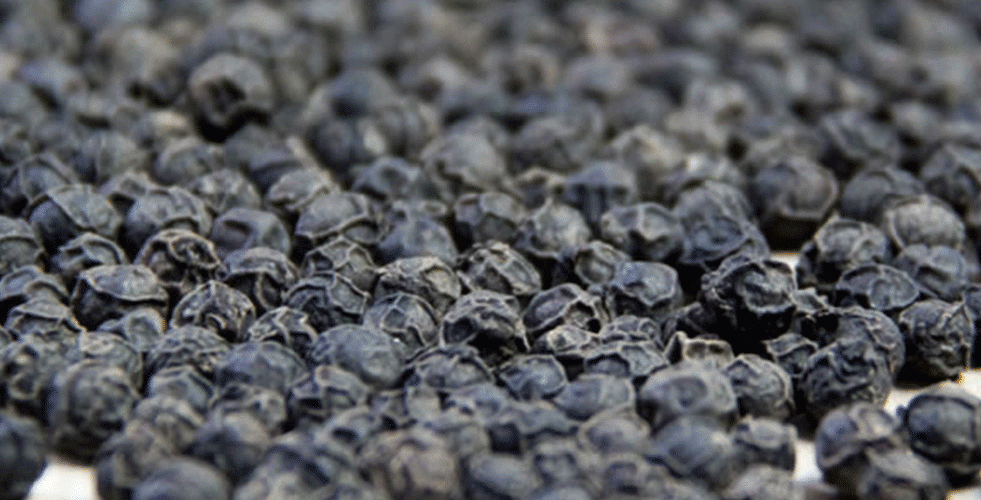
A very rigorous manual selection process for Kampot Pepper
PGI standards require us to select each bean by hand. All our production therefore passes through the expert hands of our teams of selectors, who meticulously analyse each peppercorn: removing broken peppercorns, peppercorns that are too small, or using tweezers to remove the end of the bunch that has remained attached to the peppercorn. Each selector sorts three kilos of pepper a day, and this high-quality manual work cannot be done by a machine.
So you can see why La Plantation’s Kampot Pepper is of exceptional quality, the result of year-round manual work on the farm and in the workshop. The processing methods used are designed to preserve the best colour and organoleptic qualities of each pepper.
You’ll never look at your peppercorn in the same way again!
